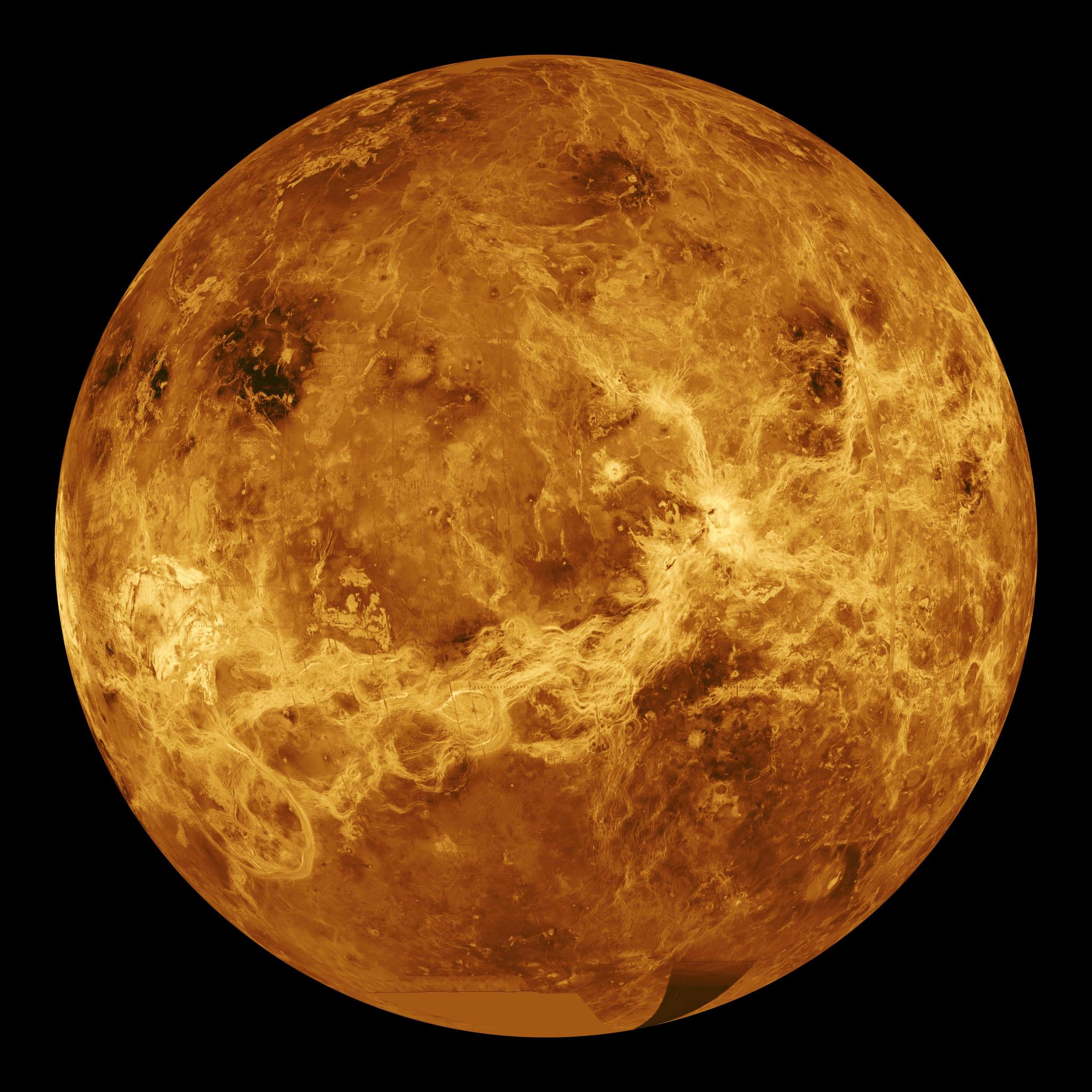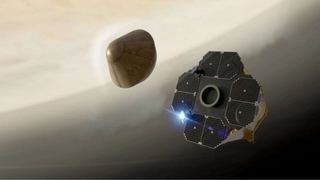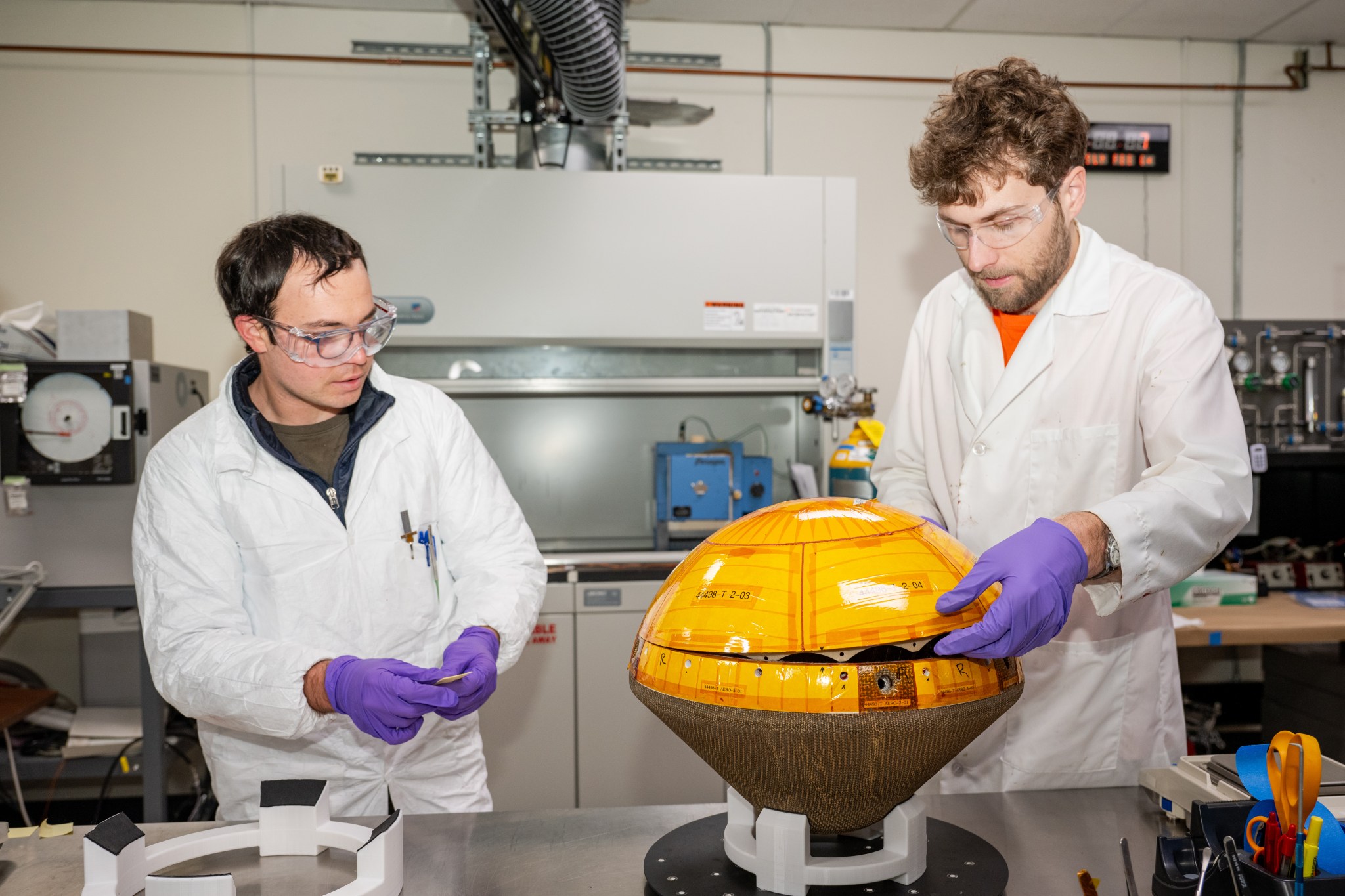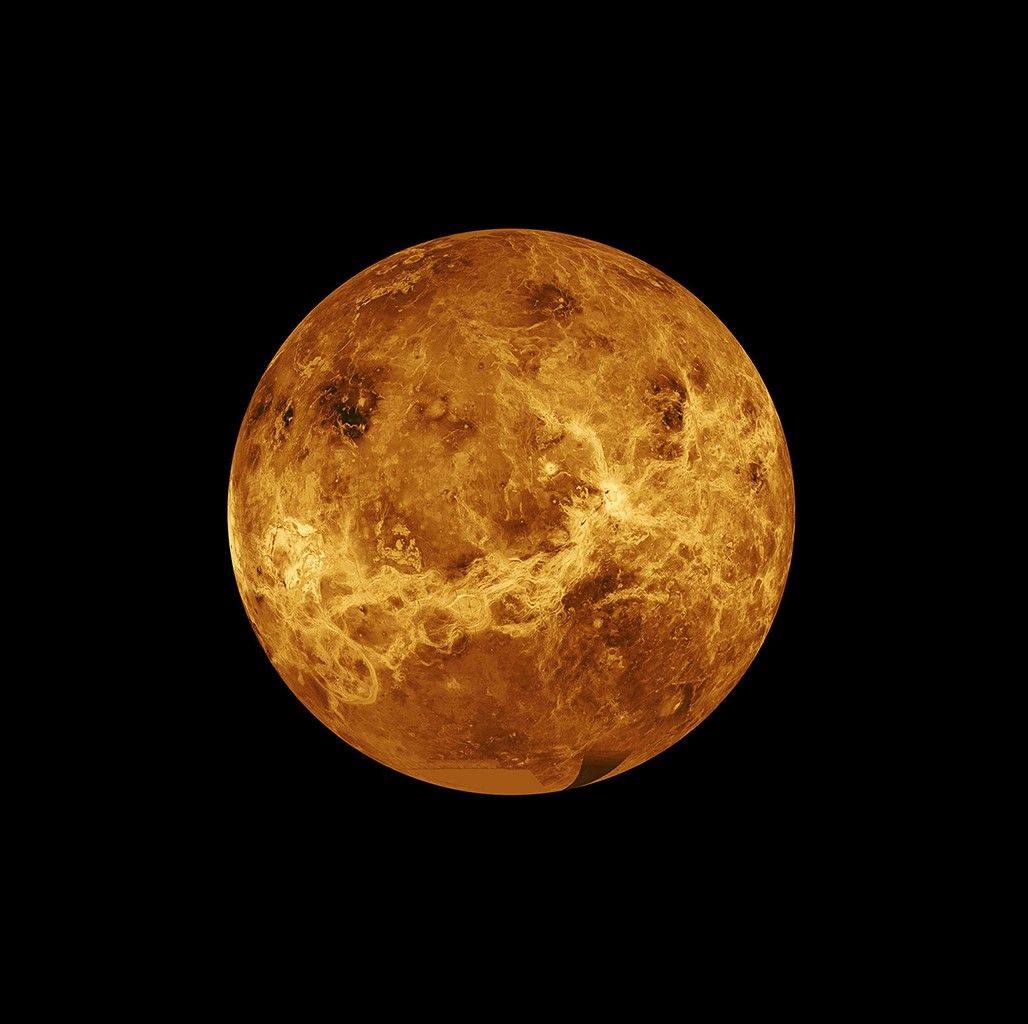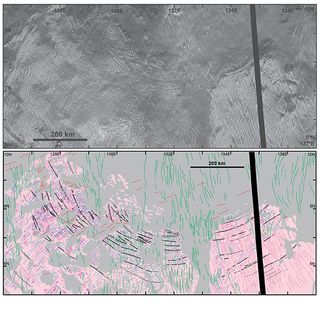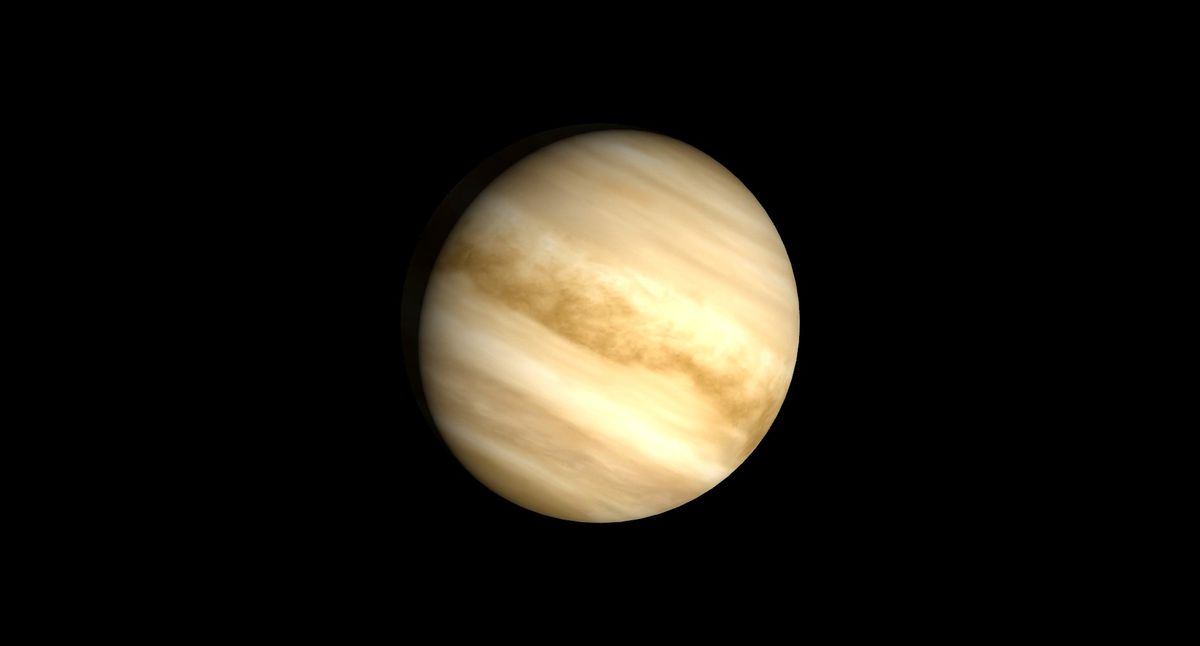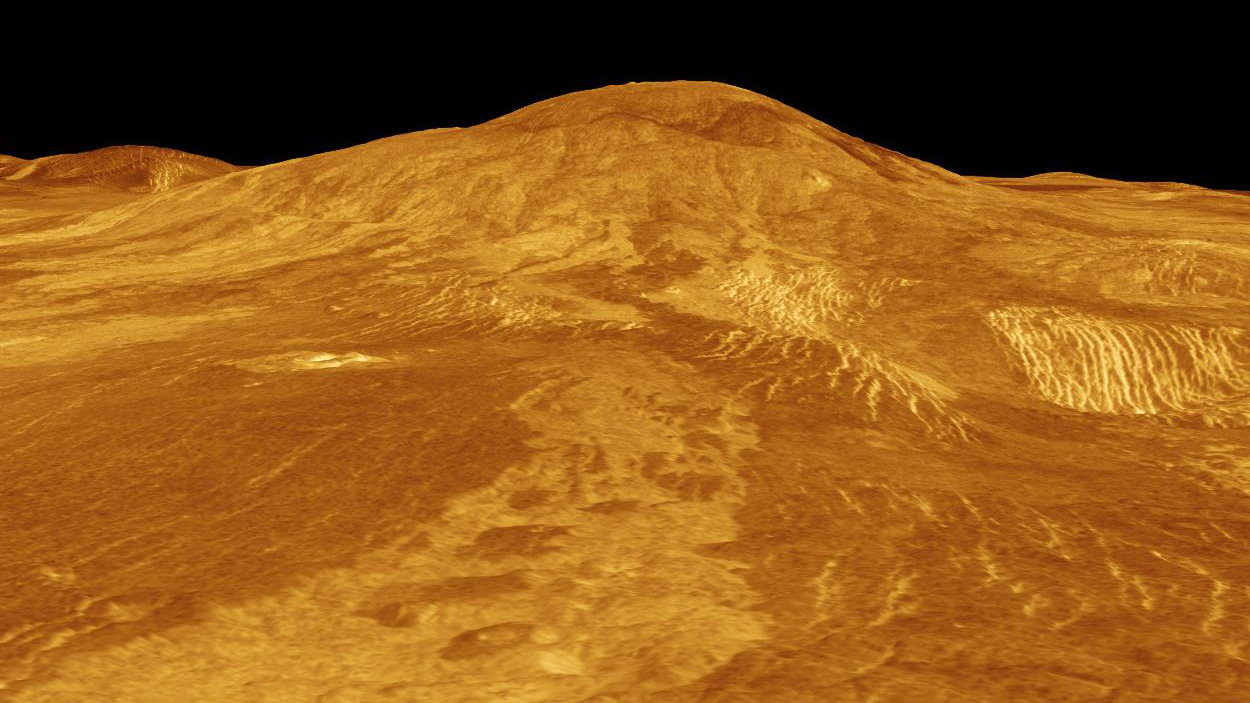3 min read NASA Study Reveals Venus Crust Surprise This global view of the surface of Venus is centered at 180 degrees east longitude. Magellan synthetic aperture radar mosaics from the first cycle of Magellan mapping are mapped onto a computer-simulated globe to create this image. Data gaps are filled with Pioneer Venus Orbiter data, or a constant mid-range value. Simulated color is used to enhance small-scale structure. The simulated hues are based on color images recorded by the Soviet Venera 13 and 14 spacecraft. NASA/JPL-Caltech New details about the…
Read MoreTag: Venus
The 1st private mission to Venus comes together ahead of possible 2026 launch (photos)
Engineers at NASA’s Ames Research Center in California’s Silicon Valley report progress in installing a heat shield on the first private spacecraft targeted for Venus. Rocket Lab of Long Beach, California, is leading the effort, along with their partners at the Massachusetts Institute of Technology (MIT) in Cambridge, Massachusetts. NASA’s Heatshield for Extreme Entry Environment Technology (HEEET) was invented at the NASA Ames center. NASA’s Small Spacecraft Technology program, part of the agency’s Space Technology Mission Directorate, supported the development of the heat shield for Rocket Lab’s Venus mission. You…
Read MoreNASA Installs Heat Shield on First Private Spacecraft Bound for Venus
NASA/Brandon Torres Navarrete Engineers at NASA’s Ames Research Center in California’s Silicon Valley, Bohdan Wesely, right, and Eli Hiss, left, complete a fit check of the two halves of a space capsule that will study the clouds of Venus for signs of life. Led by Rocket Lab of Long Beach, California, and their partners at the Massachusetts Institute of Technology in Cambridge, Rocket Lab’s Venus mission will be the first private mission to the planet. NASA’s role is to help the commercial space endeavor succeed by providing expertise in thermal protection…
Read MoreVenus Blows Off Some Steam
Tall plumes of white vapor rise from the rocky Venusian surface in this April 19, 1977, artist’s concept. NASA/Rick Guidice Tall plumes of white vapor rise from the rocky Venusian surface in this April 19, 1977, artist’s concept. A little over a year later, NASA’s Pioneer Venus 1 would launch as the first of a two-spacecraft orbiter-probe combination designed to study the atmosphere of Venus. The first American spacecraft to orbit Venus, Pioneer Venus 1 used radar to map the surface of Venus. The probe found Venus to be generally…
Read MoreNASA DAVINCI Mission’s Many ‘Firsts’ to Unlock Venus’ Hidden Secrets
5 Min Read NASA DAVINCI Mission’s Many ‘Firsts’ to Unlock Venus’ Hidden Secrets The surface of Venus is an inferno with temperatures hot enough to melt lead. This image is a composite of data from NASA’s Magellan spacecraft and Pioneer Venus Orbiter. Credits: NASA/JPL-Caltech NASA’s DAVINCI — Deep Atmosphere Venus Investigation of Noble gases, Chemistry, and Imaging — mission embodies the spirit of innovation and exploration that its namesake, Leonardo da Vinci, was famous for. Scheduled to launch in the early 2030s, DAVINCI will explore Venus with both a spacecraft…
Read MoreVenus’ ‘missing’ giant impact craters may be hiding in plain sight
Impact features on Venus may have been staring us in the face all along That’s the message from a team of planetary scientists, who have explained Venus‘ apparent dearth of large craters by discovering that impacts could have produced the mysterious “tesserae” formations on the Venusian surface. Tesserae are large — sometimes continent-size — expanses of terrain that have been deformed and covered with wrinkle ridges, which make the landforms look like sheets of corrugated iron. They are formed by lava welling up to the surface, where it cools and…
Read MoreScientists find surprising clue about Venus’ past in its atmosphere
Scientists have observed something unexpected in Venus’ atmosphere — an increase in the level of deuterium relative to hydrogen. Okay, sure, that doesn’t sound like the most exciting statement. However, the consequences of this discovery could actually upend our current understanding of the amber world. As it turns out, it would affect our assumption that Venus is a perpetually barren, inhospitable planet. Here’s how. “Venus is often called Earth’s twin due to its similar size,” said Hiroki Karyu, a researcher at Tohoku University and one of the study’s scientists, in…
Read MoreOngoing Venus Volcanic Activity Discovered With NASA’s Magellan Data
6 min read Preparations for Next Moonwalk Simulations Underway (and Underwater) This computer-generated 3D model of Venus’ surface shows the volcano Sif Mons, which is exhibiting signs of ongoing activity. Using data from NASA’s Magellan mission, Italian researchers detected evidence of an eruption while the spacecraft orbited the planet in the early 1990s. NASA/JPL-Caltech An analysis of data from Magellan’s radar finds two volcanoes erupted in the early 1990s. This adds to the 2023 discovery of a different active volcano in Magellan data. Direct geological evidence of recent volcanic activity…
Read MoreLife as we know it could exist on Venus, new experiment reveals
If Venus hosts lifeforms in its toxic clouds, they likely won’t be deprived of amino acids, one of the essential building blocks of life (as we know it). At least, that’s what scientists say is the result of a new lab experiment. Despite being Earth’s “twin,” Venus sizzles at temperatures reaching hundreds of degrees and is blanketed by clouds made of corrosive sulfuric acid, a colorless, carcinogenic liquid that dissolves metals, erodes our teeth and irritates our eyes, noses and throats. As such, the rocky planet isn’t considered to be…
Read MoreZoozve — the strange ‘moon’ of Venus that earned its name by accident
About a year ago, Latif Nasser was having a pretty ordinary evening. The day was done, the sun had set, and he was standing in front of his two-year-old son’s crib, tucking him in. It was the same room he’d visited tons of times before, performing the same duties, looking at the same wall decorated with the same solar system poster he’d seen from the same … wait. What was that? For the first time, Nasser did a double take of the artfully illustrated poster. And, for the first time,…
Read More